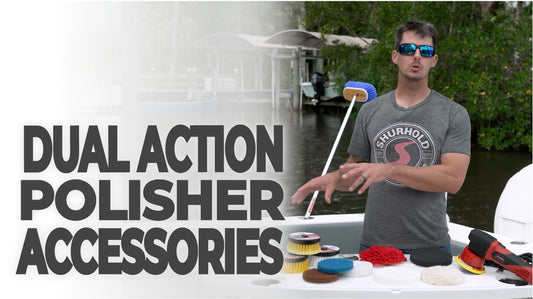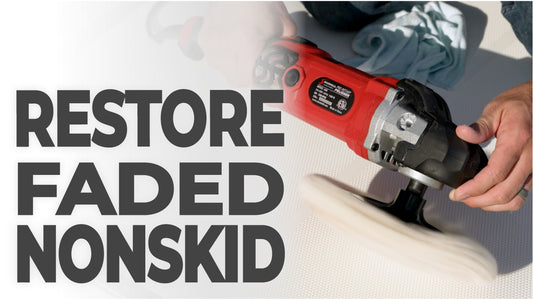You’ve been fighting this monster for too long to lose him, and now he’s coming to the boat. Do you gaff him to bring him aboard? And, if you do gaff him, where do you stick him and how big of a gaff do you use?
In today’s world of dwindling fish stocks, I prefer to only take enough fish to feed the family and not the freezer. Particularly when you have large breeding fish at boat side. Secondly, see if you really need to gaff a fish. If it is at all possible, I prefer using a landing net to bring a fish aboard. That snook, redfish or grouper that appears to be very close to legal length or upper slot limit needs to be netted so that it can be released if it is too short or too large. For large pelagic/offshore fish, a gaff is the only logical choice.
Be forewarned that the instant you stick a large fish with a gaff is by far the most dangerous moment on your boat. The aft transom corner of your boat suddenly becomes a whirlwind of gnashing teeth, swinging hooks and flying steel. Typically inexperienced anglers or guests dive into the fray with disposable cameras. This all comes together in one split second and serious injuries can occur if all members of the crew and guest are not instructed as to their appropriate position and responsibilities before that green sea monster hits the decks.
When you do use a gaff, there are several things to think about. Gaffs come in a number of sizes and types and choosing the proper gaff will depend on the type and weight of your catch as well as the height of the freeboard on your boat.
Regardless of the style of gaff you use, the critical criteria is the “Gape” of the hook. This is the distance between the shank or handle of your gaff and the business end of this tool. When offshore I generally keep two or three sizes of interchangeable “Gaff Heads” to match the catch at boat side. These run from 3” (3 inch gape) for bottom fishing or dolphin in the ten pound class, up to an 18” (18 inch ”gape”) designed for bluefin tuna or marlin. Too large of a “gape” and you will miss a sleek bodied fish like a kingfish or wahoo. Too small of a “gape” and your gaff will tear free. Unless I am sporting 50’s or larger offshore reels loaded with 100 lb line or better I generally run with a #3 and a #6 as my options.
Small Hand Gaffs
These Gaffs are usually about a foot long with a wrist strap attached to its end. Inshore and wade fishing aficionados have been replaced in most cases by the several “lip grasp” devices currently on the market. These lip grasps will hold on to the fish and in some cases they come with a scale that will weigh the fish. Regardless of whether you choose a hang gaff or a lipping device, the lower lip of the fish is your target of this tool. Simply ease the hand gaff under the lower jaw while you steady the fish by holding the leader. Raise the gaff with a steady pressure to find the sweet spot between the jawbones. I only recommend using a hand gaff or lipping tool for fish under 30 inches and/or 20 pounds. Large fish can do serious damage to your wrist.
Long Handled Gaffs
Larger gaffs come in lengths from about 3 feet to over 12 feet, and they have a super sharp stainless steel hook on the business end. Depending on the boat design, a gaff should be of sufficient length to reach out away from the boat and into the water. Larger boats with high gunnels use the longer gaffs. It takes some practice and expertise to stick a fish 12 feet from the boat. When gaffing a fish on a long handled gaff, always align the fish head forward into the current parallel to the freeboard of the boat. Calmly lower the head below the fish as far forward as possible but still behind the bony gill plates. Raise the gaff with a strong yet steady pressure. Never slash or stab at a fish.
Whatever size gaff you choose, keep in mind that the IGFA has very specific rules governing their use. In IGFA tournaments or to be considered for record status any gaff used to land a fish must not exceed 8 feet overall length.
Flying Gaff
Fishermen who target large marlin, shark or tuna use a gaff called a flying gaff. This specialized gaff has a long rope tied to the base of the gaff hook on the end of the gaff. When the fish is struck with the gaff, a quick jerk on the gaff pole separates the gaff hook. That leaves your fish with the gaff hook and you with the other end of what now is essentially a hand line. With the possible exception of a large tuna, flying gaffs are seeing less use every year as fewer and fewer of these critically over fished species are taken by recreational anglers.
Gaffing Tips:
- Make sure the gaff hook is facing down and toward the boat as the fish is brought alongside.
- Lead the fish! Water refraction makes the fish look more forward than they actually are.
- Bury the gaff in the forward shoulder of the fish, not the tail end. Always aim for the top of the fish toward the head for more control and to protect the meat.
- Once a fish is on the gaff, the angler should back off on the drag or disengage the reel with the clicker on.
- Don’t attempt to gaff a fish that is too deep and beyond reach. Be patient and wait for a clean shot.
- While waiting for the gaff, the angler should never lift the fish’s head out of the water.
- Purchase a high quality gaff. This is no place to compromise.



